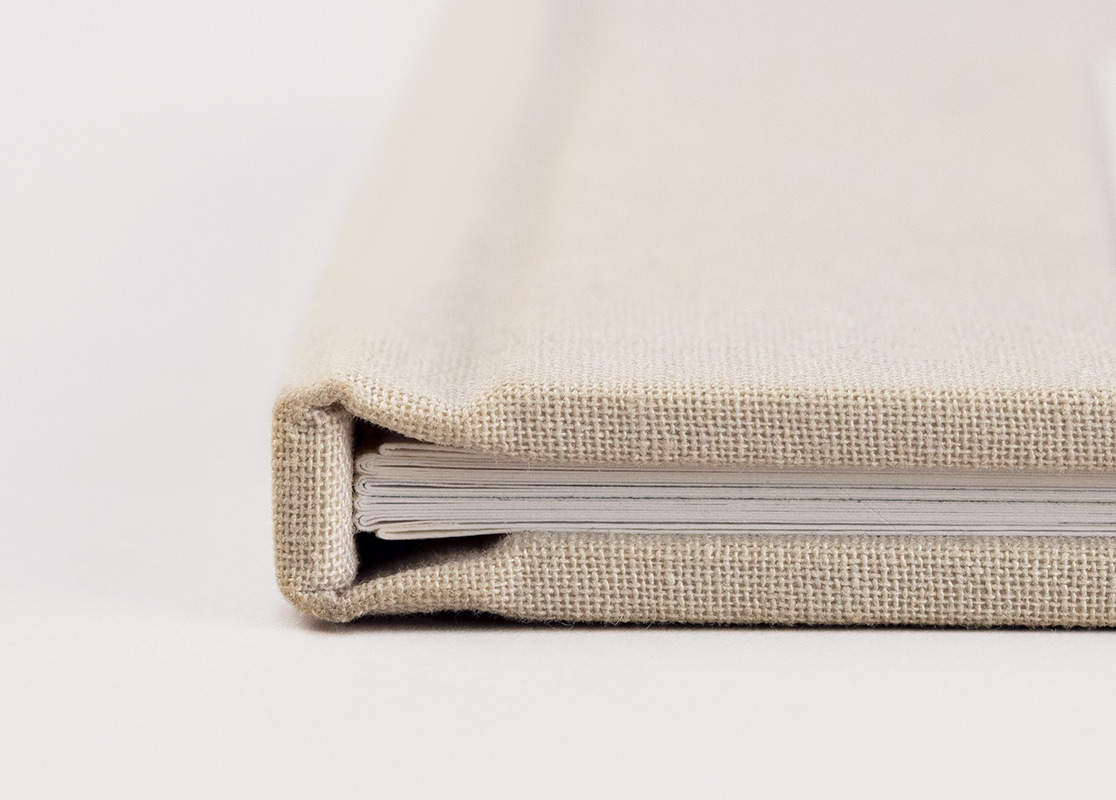Handbound with love

At MILK Books we draw on our award-winning publishing heritage and bookmaking expertise to help you create beautifully designed, high quality photo books and albums that will be enjoyed for generations. After decades of experience in bookmaking, we've tried all sorts of paper types, binding methods, and printing techniques to bring what you see today at MILK.
Handcrafted with love, all three binding processes used today - section-sewn binding, lay-flat binding, and PUR binding - have been chosen to reflect our commitment to enduring quality.

Section-sewn binding
Benefits:
- Long-lasting strength and durability
- Books open to lay near-flat (regardless of page count)
- Age-old bookmaking technique
- Showcase your images across double-page Designer Layouts
Used For: Premium Photo Books, Moleskine Photo Books
Section-sewn binding is an age-old bookmaking technique that requires extra care and time, which is made evident in the stunning results. In this binding method, sections of folded pages (signatures) are bound together with thread. Each signature is stitched together forming a book block that is then glued along the binding edge to give extra strength and durability. The resulting books are of very high quality and durability; they will last a lifetime. They also have great lay-flat capabilities as the paper pages open to lay near flat (with very limited bowing from the center). Loved by book makers, this traditional form of binding is by far the best method available.
Note: Photo Books with 24-40 pages will not have head and tail (H&T) bands added to the binding. For H&T bands to be included, your Photo Book must have a minimum of 42 pages (Classic), or 44 pages (Premium). Moleskine Photo Books will not have H&T bands added to the binding, no matter the page count.

Lay-flat binding
Benefits:
- Allows our photo albums to open completely flat
- Can showcase images across a double-page spread without losing details in the 'gutter'
- Ease in turning pages for a great viewing experience
- Weighty board pages
Used for: Premium Photo Albums, Classic Photo Albums, and Guest Books
Lay-flat binding is a traditional album binding technique which allows the weighty board pages of your album to lie completely flat when opened. This allows you to enjoy panoramic spreads across two pages. Your images are printed on high quality paper stocks and are flush-mounted on board. This detailed approach is what creates true quality. Compared to other binding techniques, none of your imagery will be lost in the gutter or confined to a single page. This allows the depth and meaning of the image to be in full effect.
Note: Photo Albums over 46 pages use a marginally thinner board (between 0.88 to 0.98mm). This is to account for the higher page count. Guest Books use a 0.61mm board.

PUR binding
Benefits:
- Strong yet flexible adhesive to withstand frequent viewing
- Efficient binding process for many various paper types
- Durable adhesive that won't deteriorate in hot or cold climates
- Durable technique widely used in the bookmaking industry
Used for: Magazines, Classic Photo Books, Softcover Photo Books
PUR binding is the preferred form of Perfect binding - one of the most popular book binding methods in use today. With PUR binding, single pages are glued together at the spine using Polyurethane Reactive Adhesive (PUR) - the strongest book binding glue available. The resulting books are of very high durability and the pages will remain secure for generations. As well as strong, PUR glue is also very flexible. This means that while pages will still bow from the center, over time the books will open to lay flatter as pages tend to relax with repeated use.
Note: Photo Books with 24-40 pages will not have head and tail (H&T) bands added to the binding. For H&T bands to be included, your Photo Book must have a minimum of 42 pages (Classic), or 44 pages (Premium).






